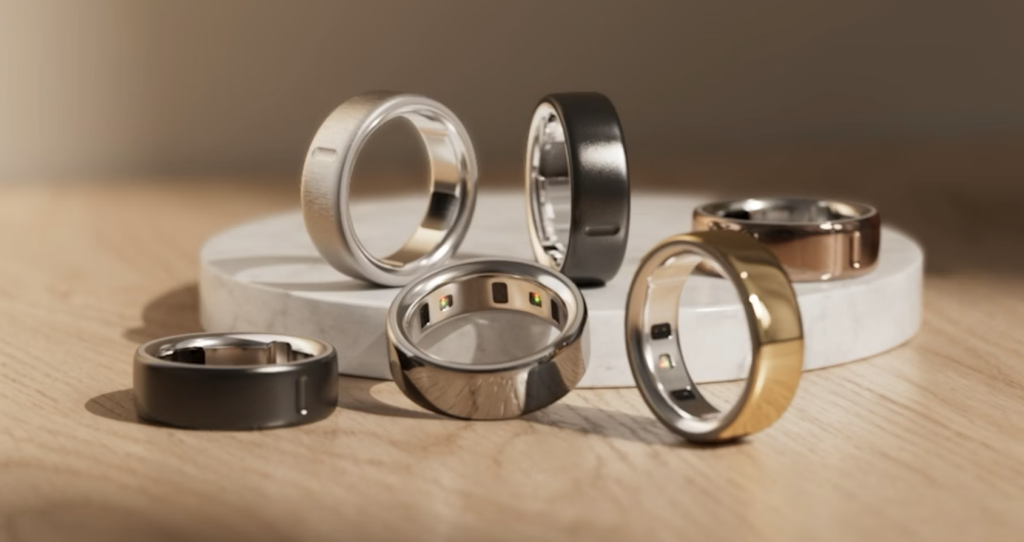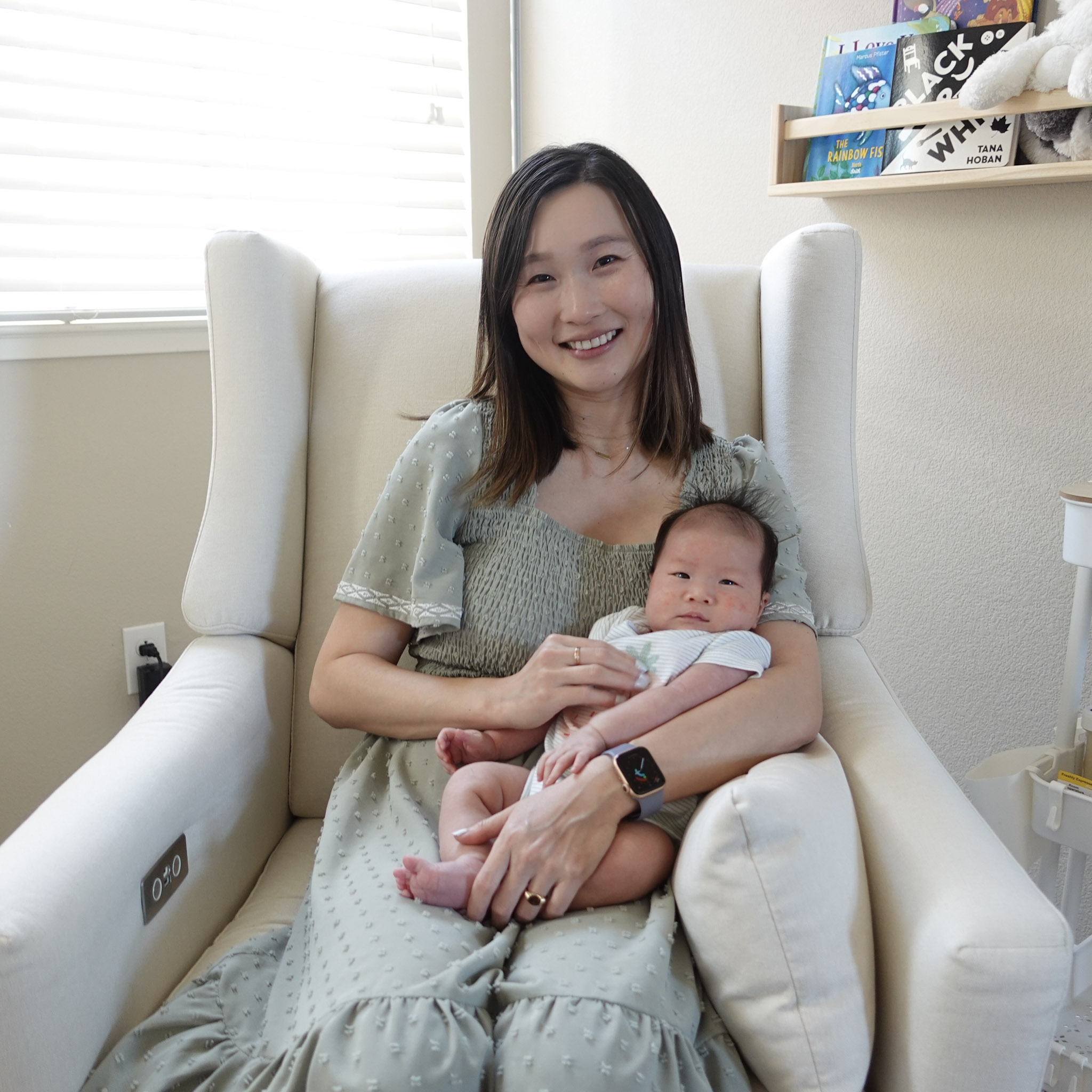
It’s sleek. It’s smart. And all the female CEOs and celebs are sporting it lately!
I got my Oura Ring Gen 3 over half a year ago after a friend raved about it, and I’m so glad she recommended it. It has been a game-changer for tracking my health in many ways. To pass the recommendation on to you, I’m sharing my honest, unfiltered review (meaning, not sponsored or influenced in any way)!
Before the Oura, I relied solely on my Apple Watch Gen 6 for health and fitness tracking. I still use it every day now because there are major strengths of the Oura vs. watch, and I find that using them together provides the most complete picture of my wellbeing.
I know a lot of people find the Apple watch or similar smartwatch uncomfortable on their wrist, especially while sleeping. If that’s you, I’d definitely recommend looking into the Oura ring.
Oura App Subscription: Is It Worth It?
First, there’s one important caveat with the Oura: to get the most out of the ring, you do need the Oura app subscription, which is $5.99 per month. Without the subscription, you still get basic data like heart rate and activity tracking, but most of the detailed insights—like the Readiness Score, sleep staging breakdown, and temperature trend analysis—are unavailable.
For me, the subscription is totally worth it. To be honest, I really don’t like having to pay an extra $6 every month when the ring itself is so pricey already, but the app is a must-have.
The deeper insights into my sleep, stress, and recovery have helped me adjust my lifestyle in ways that actually improve my energy levels. The app also includes guided meditations, breathing exercises, and wellness reports, although I haven’t used any of these so far.
If you’re planning to invest in the Oura Ring, I’d recommend factoring in the subscription cost because without it, you won’t get the full benefits.
Design & Comfort
One of the things I love most about the Oura Ring is how comfortable it is to wear while sleeping. Daily wear during the day still takes some getting used to, since your fingers are more active. While sleeping though, the ring is so much more comfortable than a heavy smartwatch on your wrist.
In terms of aesthetics, it’s pretty good at blending in and looks like a regular ring from a distance. It’s definitely too thick to lift weights with though. I always take it off when I’m lifting.
This leads to one of the main reasons I still use my Apple Watch daily: for the outstanding fitness tracking. I enjoy the three colorful rings and the goal of closing them each day. I like how easy it is to select the specific workout I’m doing right from the watch and then start a session. And of course, it doesn’t interfere with my workout at all.
How Accurate is the Oura Ring?
Sleep tracking is an area where the Oura Ring truly shines. It breaks down your sleep into REM, deep sleep, and light sleep, while also analyzing sleep latency (how long it takes you to fall asleep) and disturbances throughout the night.
I honestly think the Oura is the best sleep tracker out there. It’s not the most affordable or universal, but the verdict appears to be that it’s has the best accuracy and level of detail for a wide range of metrics. These metrics together paint a nice, holistic picture of your wellbeing.
What the Oura Ring Tracks
HRV Tracking: My Favorite Feature
Another standout feature is heart rate variability (HRV) tracking. HRV measures the small changes in time between each heartbeat, showing how well your body handles stress and recovery. A higher HRV usually means you’re well-rested and recovering properly, while a lower HRV can be a sign of stress or exhaustion. The Oura Ring tracks HRV while you sleep, giving you a clear picture of how your body is doing when it’s fully at rest. Over time, you can see trends and learn how sleep, exercise, and stress affect your health—helping you make better choices for more energy and recovery.
Readiness Score: My Favorite Feature
The Oura Ring monitors HRV, resting heart rate, and body temperature trends to provide a Readiness Score that tells you how well your body has recovered. It essentially provides an overview of how well-rested and recovered you are.
Surprisingly, this has been my favorite feature so far! It has helped me make better decisions about how hard I should go for my workout that day, understand why I’m feeling particularly tired on a given day, and learn what actually improves my sleep quality.
It has been incredibly helpful for managing stress and energy levels. On days when my readiness score is low, I know to take it easy—maybe opt for a rest day instead of an intense workout. When my score is high, I feel more confident pushing myself. It also works the other way around. For example, if I wake up feeling sluggish, I’ll check my app to see if my readiness score confirms it. If it says I’m doing okay, I usually just proceed with my day as usual.
Menstrual Cycle and Fertility Tracking
For those who want to track their menstrual cycle and fertility, the Oura Ring has an excellent cycle-tracking feature that uses body temperature trends to predict cycle phases. I’ve found it to be surprisingly accurate, and I love that it doesn’t require constant manual input.
Instead of relying on symptom logging, the Oura Ring passively tracks temperature changes and gives predictions for both ovulation and period start date based on real physiological data. The longer you’ve used your ring, the more data it will collect and the more accurate your predictions get over time.
Mine started out pretty inaccurate because my cycles are often irregular, but after 6 months it has gotten so much more accurate! If you’re serious about getting pregnant, I’d recommend also trying the Natural Cycles app which integrates with the Oura app. If you just want to track your cycle without a specific goal, Oura itself is plenty enough.
The main reason I originally got the Oura was because I knew at some point we wanted to try for another baby, and I wanted to get a better sense of my average cycle length and variation ahead of time. With my cycles that are basically all over the place, the goal was to get many months of data to see how they averaged out. I now have a much better sense of my cycles and trends, and feel more confident using the Oura for fertility tracking (along with ovulation strips) when the time comes!
Battery Life & Convenience
One of the biggest perks of the Oura Ring is its battery life. Unlike the Apple Watch that needs to be charged daily, the Oura Ring Gen 3 lasts about 5 days on a single charge. This is how long it actually lasts when I use it (not what the Oura site says).
The long battery life makes it so much easier to wear consistently without worrying about it dying in the middle of the day. You’ll also get uninterrupted sleep tracking data every night.
Should You Get the Oura?
The Oura Ring has become an essential part of my wellness routine. Its detailed sleep insights, readiness tracking, and cycle tracking and predictions allow me to better understand my body and optimize my day to support it.
Of course, collecting even high-quality data is pointless if you don’t use it. If you do get the ring, I highly recommend checking in with your Oura app daily and making that part of your morning routine so that you can make better decisions based on your scores and trends.
If you want to try it out and you feel comfortable dishing out $5.99 per month for the Oura app, make sure you first get a sizing kit from Oura or major stores to find the best fit for you. When you’re ready, you can use my Oura link to get 10% off!


Leave a Reply